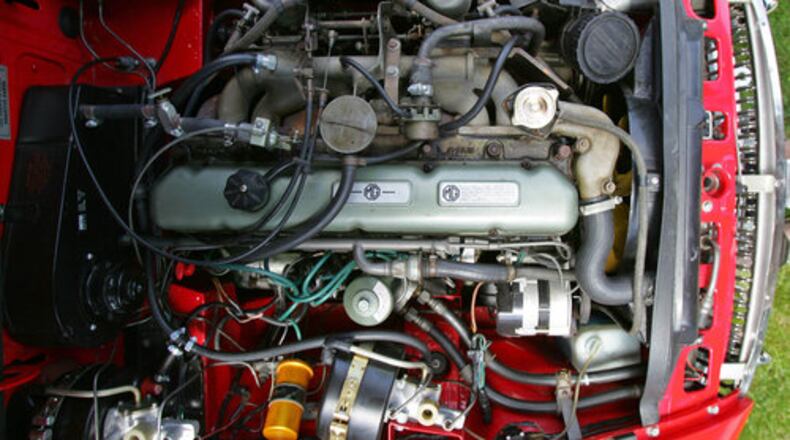My question is, at that mileage, should the injectors need to be cleaned, or for that matter, need to have anything done to them? It runs well and the gas mileage is good, but I am getting pressure from the dealer to have a “fuel injector service” done for $300.
I had my last vehicle for 10 years and never touched the injectors. Call me curious. -- Rod
RAY: You’re right to be curious, Rod. And resistant.
The short answer is no. Your fuel injectors shouldn’t need any kind of service at 22,000 miles. Nor should anything else on this engine. At 22,000 miles, unless there’s a performance issue, oil changes should be all that’s required. The car’s brand new. And if there is something wrong with the fuel injectors at 22,000 miles, it ought to be covered by the warranty, shouldn’t it?
I’m afraid your dealer is looking for what we call A.D.P. -- Additional Dealer Profit. So I would go to Google Maps, get him directions to the nearest lake and suggest he drive there and jump in it.
Several decades ago, fuel injectors would get dirty after some tens of thousands of miles. And we had a big machine at the garage that we called the Wallet Vac. It was actually called the MotorVac.
The MotorVac would run a solution through the fuel system and clean out the dirty injectors and valves. And at one time, we probably used that machine three times a week.
But in recent decades -- to address that problem -- carmakers have worked closely with the gasoline companies to make what they call “top tier” fuel, which is super clean. It includes detergents, too. And we hardly ever see dirty fuel injectors on modern cars anymore.
So skip this unnecessary service, Rod. If you want to avoid confrontation, tell the dealer “I’ll think about it ... maybe next time.” And tell him the same thing next time, too.
Don’t expect real-world results to match mileage on the sticker
Dear Car Talk:
My new, 2020 Chevy Malibu promised on Chevy’s website -- and on its MSRP sticker -- to get 29 miles per gallon in the city. It doesn’t. The best gas mileage I have even gotten for a tankful of gas was 24 mpg.
I’ve returned to the dealer three times. They say everything is running as it should and according to spec. They showed little concern for my problem.
I live in San Diego, have 5,000-plus miles on it and feel cheated! I bought this car over two other cars due to its advertised exceptional gas mileage.
What gives? -- Craig
RAY: What gives? The large print gives, Craig. And the small print taketh away.
The small print says “your mileage may vary.” And if you read Car Talk regularly, you know that it almost always varies downward. Although some estimates are further off than others. The problem with mileage numbers is that they rarely represent real-world driving conditions or drivers.
The Environmental Protection Agency requires that car manufacturers test each model using very specific instructions. The vehicle is put on a dynamometer. What’s that? It’s the automotive equivalent of an exercise bicycle. The car sits still, and the driven wheels turn a roller, to simulate driving. Then the driver follows a very specific set of instructions to simulate a bunch of “trips.” He or she will try to match the car’s speed to the exact speeds on a screen, as it leads them through a “course” of stop and go trips. And as long as the test driver stays within 2 mph of the specified speeds, the test is valid, and automaker has an EPA mileage number.
The city test reportedly covers 11 miles of driving in about 31 minutes and has a maximum acceleration rate of 18 second for a 0-60 time. That’s the speed at which -- if that person were in front of you -- you’d assume they were driving that slowly because they were heading to a coloscopy appointment.
Of course, hardly anybody drives exactly like that. Well, my late brother drove like that, but he was always afraid his cigar ash would fall off and land between his legs.
More importantly, since the automakers know precisely how they’ll be tested, they can design their cars to excel on that test. For instance, if they know the most common speeds on the test are 25-35 miles an hour, they can engineer their transmission shift points and engine parameters to be most miserly at that speed. Even if that’s not how many drivers will use their cars.
For all these reasons, we always recommend using the EPA mileage numbers for comparison shopping, rather than as promised, real-world results. And we’d recommend to your dealer that he send a guy over to your house to add half a gallon of gas to your tank once a week. That’ll raise your mileage just enough to keep you from coming back and complaining.
Got a question about cars? Write to Ray in care of King Features, 628 Virginia Drive, Orlando, FL 32803, or email by visiting the Car Talk website at www.cartalk.com.
About the Author

